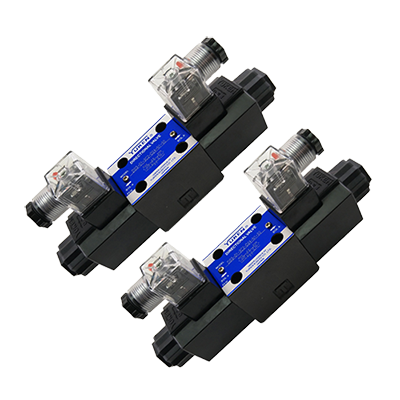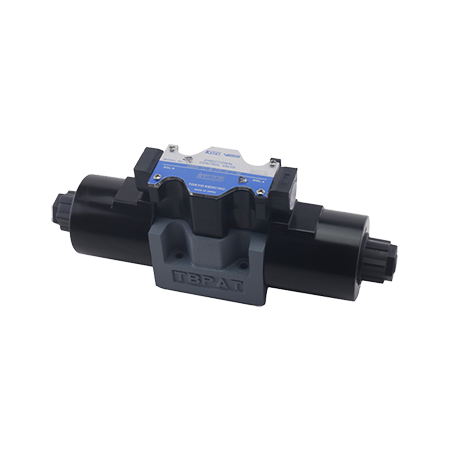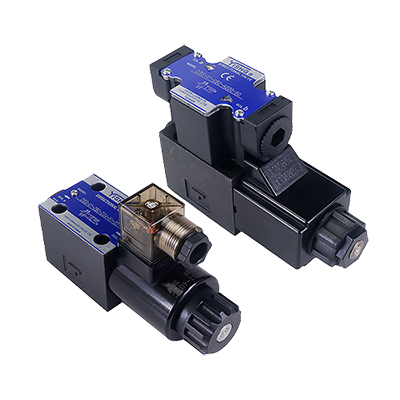Introduce the directional Control valve of the hydraulic system
Hydraulic solenoid valves are widely used in our production. They are the control components in the hydraulic system. You should have seen many problems related to solenoid valves and dealt with various faults. You must have accumulated a lot of relevant information. Solenoid valve troubleshooting experience, this article will introduce you to the solenoid valve used in the hydraulic system.

Let's have a preliminary understanding of the solenoid valve. The solenoid valve is composed of a solenoid coil and a magnetic core, and is a valve body containing one or several holes. When the coil is energized or de-energized, the operation of the magnetic core will cause the fluid to pass through the valve body or be cut off, so as to achieve the purpose of changing the direction of the fluid. The electromagnetic components of the solenoid valve are composed of fixed iron core, moving iron core, coil and other components; the valve body part is composed of spool valve core, spool valve sleeve, spring base and so on. The solenoid coil is mounted directly on the valve body, which is enclosed in a gland, forming a neat and compact combination. The solenoid valves commonly used in our production include two-position three-way, two-position four-way, two-position five-way, etc. Let me talk about the meaning of the two bits first: for the solenoid valve, it is electrified and de-energized, and for the controlled valve, it is on and off.

In the instrument control system of the oxygen generator, the two-position three-way solenoid valve is the most used. It can be used to switch on or off the gas source in production, so as to switch the gas path of the pneumatic control membrane head.
It is composed of valve body, valve cover, electromagnetic assembly, spring and sealing structure and other components. The sealing block at the bottom of the moving iron core closes the air inlet of the valve body by the pressure of the spring. After electrification, the electromagnet is closed, and the sealing block with spring on the upper part of the moving iron core closes the exhaust port, and the air flow enters the membrane head from the air inlet to play a control role. When the power is off, the electromagnetic force disappears, the moving iron core leaves the fixed iron core under the action of the spring force, moves downward, opens the exhaust port, blocks the air inlet, the membrane head airflow is discharged through the exhaust port, and the diaphragm recovers. original location. In the oxygen production equipment, it is used in the emergency cut-off of the membrane regulating valve at the inlet of the turbo expander.

There are many applications of four-way solenoid valve, and its working principle is as follows:
When a current passes through the coil, an excitation effect is generated, and the fixed iron core attracts the moving iron core, and the moving iron core drives the spool valve core and compresses the spring, changing the position of the spool valve core, thereby changing the direction of the fluid. When the coil is de-energized, the spool valve core is pushed by the elastic force of the spring, and the iron core is pushed back to make the fluid flow in the original direction. In our oxygen production, the switch of the forced valve of the molecular sieve switching system is controlled by a two-position four-way solenoid valve, and the air flow is respectively supplied to both ends of the piston of the forced valve. To control the opening and closing of the forced valve. The failure of the solenoid valve will directly affect the action of the switching valve and the regulating valve. The common failure is that the solenoid valve does not operate. It should be checked from the following aspects:
(1) The wiring head of the solenoid valve is loose or the thread ends fall off, the solenoid valve is not powered, and the thread ends can be tightened.
(2) The solenoid valve coil is burned out. The wiring of the solenoid valve can be removed and measured with a multimeter. If the circuit is open, the solenoid valve coil is burned out. The reason is that the coil be affected with damp, which will cause poor insulation and magnetic flux leakage, which will cause excessive current in the coil and be burned down. Therefore, rainwater should be prevented from entering the solenoid valve. In addition, the spring is too hard, the reaction force is too large, the number of turns of the coil is too small, and the suction force is not enough, which can also cause the coil to burn out. For emergency treatment, the manual button on the coil can be turned from "0" to "1" during normal operation to open the valve.
(3) The solenoid valve is stuck. The cooperation gap between the slide valve sleeve and the valve core of the solenoid valve is very small (less than 0.008mm), and it is usually assembled in a single piece. When mechanical impurities are brought in or there is too little lubricating oil, it is easy to get stuck. The treatment method is to use a steel wire to poke through the small hole in the head to make it bounce back. The fundamental solution is to remove the solenoid valve, take out the valve core and valve core sleeve, and clean it with CCI4 to make the valve core move flexibly in the valve sleeve. When disassembling, pay attention to the assembly sequence of the components and the position of the external wiring, so that the reassembly and wiring are correct, and check whether the oil spray hole of the lubricator is blocked and whether the lubricating oil is sufficient.
(4) Leakage. Air leakage will cause insufficient air pressure, making it difficult to open and close the forced valve. The reason is that the seal gasket is damaged or the slide valve is worn, resulting in air blowing in several cavities. When dealing with the solenoid valve fault of the switching system, an appropriate timing should be selected, and the solenoid valve should be dealt with when the power is lost. If the processing cannot be completed within a switching gap, the switching system can be suspended and handled calmly.
